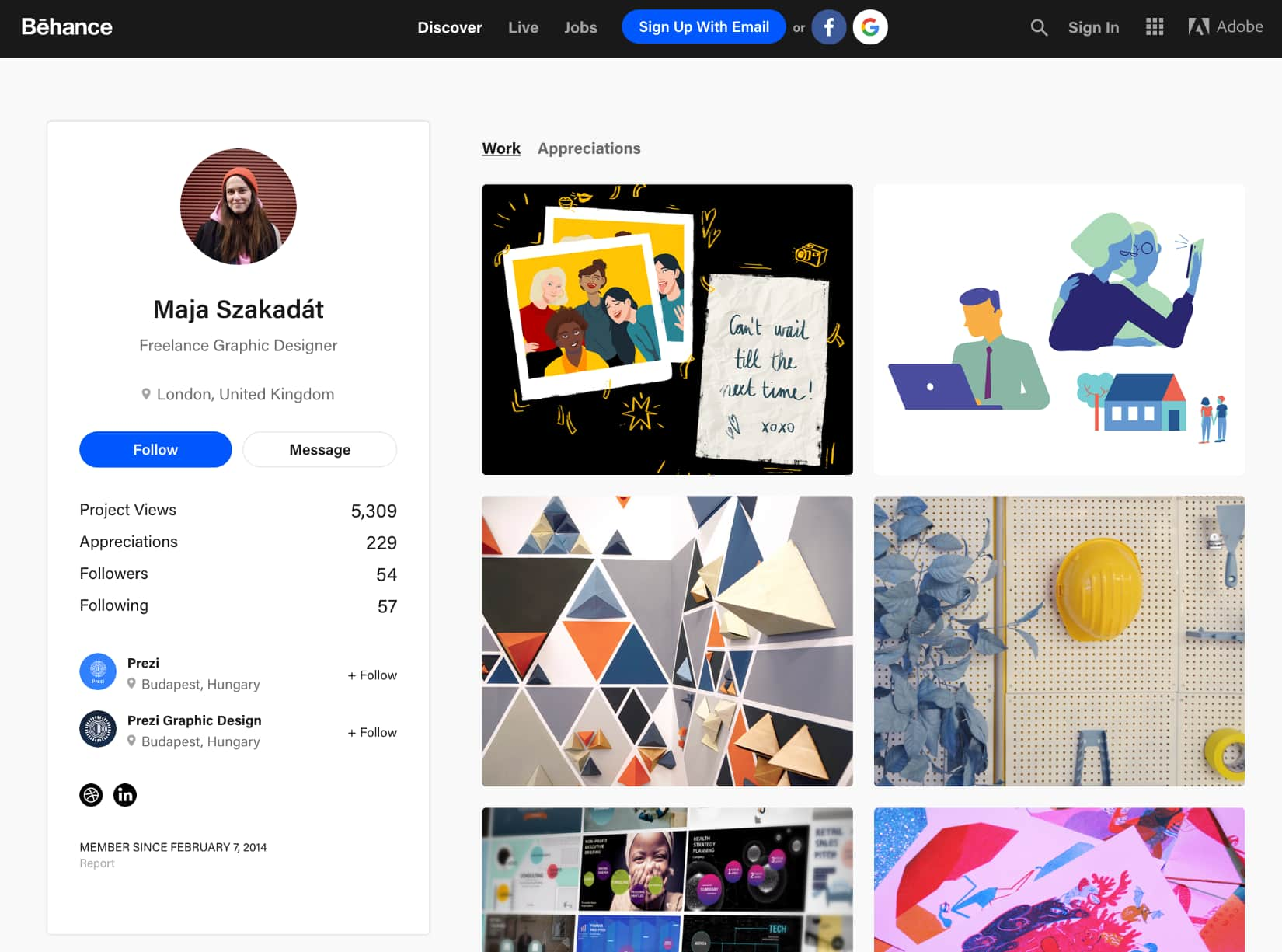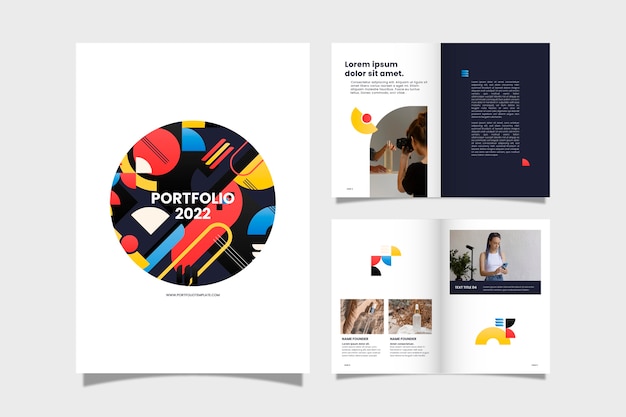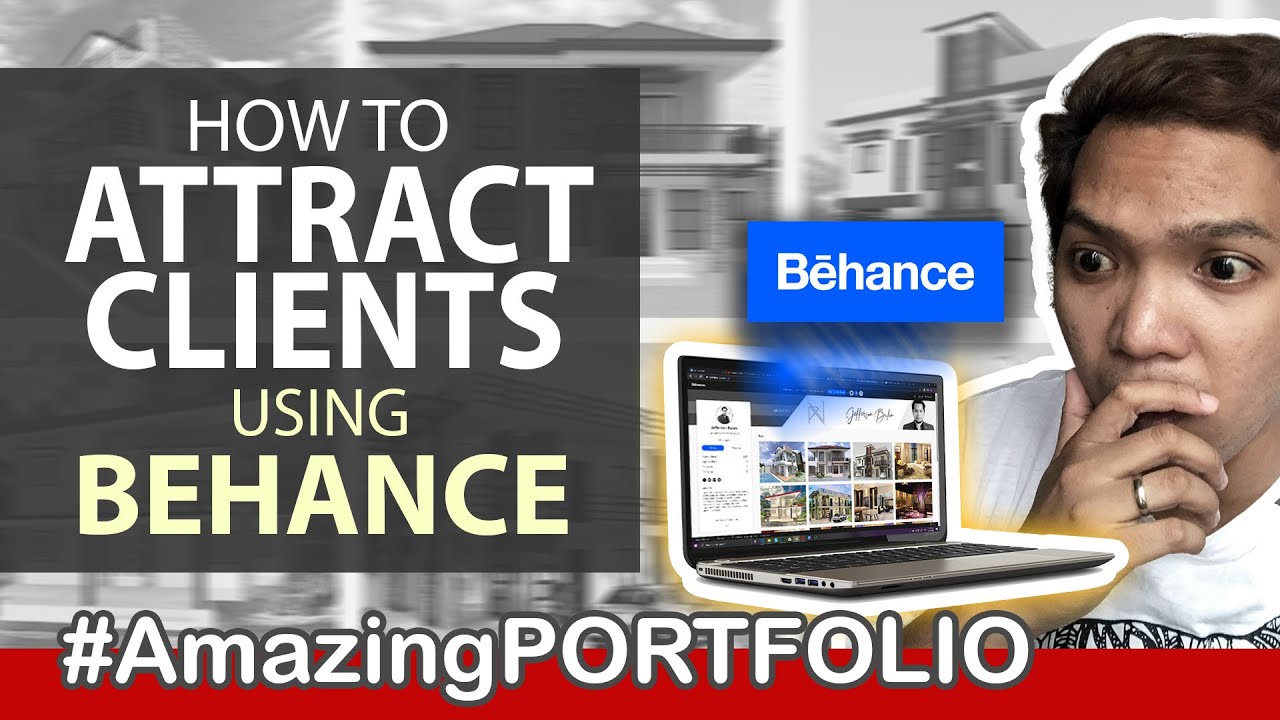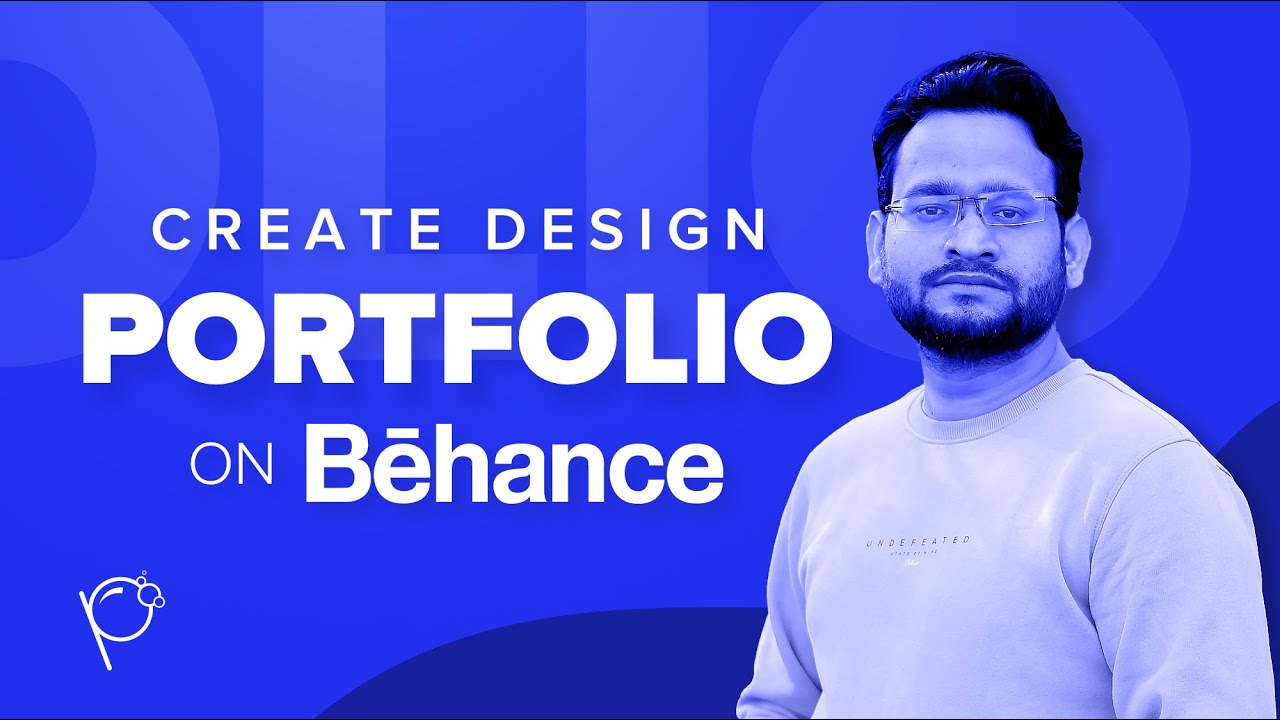Creating an impressive Behance portfolio can be a game-changer for freelancers and creatives alike. It's not just about showcasing your work; it's about presenting yourself in a way that attracts potential clients. In the digital age, where first impressions count, a well-crafted Behance portfolio can help you stand out in a crowded marketplace. This post will guide you through understanding
Understanding Behance

Behance is a popular online platform that serves as a showcase for creative work. Founded in 2005 and now owned by Adobe, it’s a vibrant community where designers, artists, illustrators, and other creatives share their portfolios and connect with peers and potential clients. But what sets Behance apart, and why should you consider it your go-to for portfolio presentation? Let’s break it down.
- Platform Diversity:
Behance is not limited to just one type of creative work. Whether you're a graphic designer, a photographer, an illustrator, or even a motion graphic artist, Behance accommodates various mediums. This diversity allows you to find your niche and connect with like-minded professionals.
- Networking Opportunities:
The platform is not just about presenting your work. It's also a place to engage with other creatives. You can follow other artists, like their projects, and leave comments. This interaction can lead to collaborations and opportunities you might not find elsewhere.
- User-Friendly Interface:
Behance's layout is designed for easy navigation. Users can quickly browse portfolios or specific projects. This means that if your work is well-organized, it's more likely to grab attention. Use high-quality images and engaging project descriptions to enhance your presence.
- Search Engine Friendly:
Because of its integration with Adobe and its popularity, Behance projects often get good visibility on search engines. This means that if you optimize your projects with relevant keywords, you can attract a broader audience.
In summary, Behance is an invaluable platform for showcasing your work. Understanding its features can help you leverage it effectively, making it easier to attract clients and grow your creative career. Whether you're a seasoned professional or just starting out, mastering Behance can significantly impact your visibility in the creative industry.
Also Read This: How to Sell Your Photos on Getty Images for Beginners
Choosing the Right Projects to Showcase

When you’re setting up your Behance portfolio, it’s crucial to carefully select the projects you want to display. After all, this is your chance to shine and attract potential clients. But how do you decide which pieces deserve the spotlight? Here are some tips to help you choose wisely:
- Highlight Quality over Quantity: It's better to showcase a few outstanding projects than to fill your portfolio with mediocre work. Aim for around 6-10 projects that truly represent your best skills and creativity.
- Showcase Diversity: If you can, include a variety of work that exhibits your range. Whether it's graphic design, illustration, or photography, show that you can adapt to different styles and client needs.
- Tell a Story: Choose projects that have a narrative element. For example, if you worked on a branding project, share the challenges you faced and the solution you created. This storytelling aspect will engage viewers more deeply.
- Include Client Work: If you’ve worked with clients in the past, flaunt those projects! They add credibility to your portfolio and demonstrate your ability to collaborate effectively.
- Personal Projects Matter: Don’t shy away from showing personal projects that speak to your passion or interests. These can display your creativity and initiative, making potential clients feel connected to your artistic drive.
In summary, choose projects that reflect your unique style, versatility, and problem-solving capabilities. Remember, every piece in your portfolio is an opportunity to wow potential clients!
Also Read This: Can You Share Your iStock Photos on Facebook and Understand Usage Rights
Crafting a Compelling Portfolio Layout

Once you’ve selected the projects you want to showcase, the next step is to create an engaging layout. A well-organized and visually appealing portfolio can significantly enhance viewer experience, leaving a lasting impression. Here’s how to get it right:
- Simplicity is Key: Avoid cluttering your layout with too many elements. A clean design helps focus attention on your work. Think of white space as a friend—use it effectively!
- Consistent Design Elements: Use a consistent color palette, typography, and grid system throughout your portfolio. This cohesion not only strengthens your personal brand but also makes navigation intuitive.
- Use High-Quality Images: Always display your work using high-resolution images. Blurry or pixelated visuals can undermine your professionalism, so invest time in presenting your work beautifully.
- Organized Sections: Group your projects in relevant categories (e.g., branding, digital art, illustration). Consider using tabs or a navigation bar for easy access, allowing visitors to find what interests them quickly.
- Interactive Elements: Consider incorporating interactive elements such as videos or GIFs to make your portfolio more dynamic. This can elevate the viewing experience and engage your audience more effectively.
A compelling layout is like the icing on the cake of your portfolio. It not only showcases your skills but also reflects your professionalism and attention to detail. By carefully organizing your projects and creating an inviting user experience, you can better attract and impress potential clients!
Also Read This: Mastering Adobe Stock Templates in Illustrator
Using High-Quality Images and Visuals

When it comes to showcasing your work on Behance, the importance of high-quality images and visuals simply cannot be overstated. Think about it: your portfolio is often the first impression potential clients will have of you. If it's lacking in quality, it can lead to missed opportunities. So, how can you ensure your visuals stand out?
Firstly, invest in good photography. Whether you're showcasing graphic designs, illustrations, or any other form of visual art, high-resolution images are a must. Ensure that your images are crisp, clear, and vibrant. This means:
- Use a Good Camera: If you're photographing physical products, consider using a DSLR or a high-quality smartphone camera.
- Good Lighting: Natural light is often the best choice; it enhances colors and details.
- Editing Tools: Utilize software like Adobe Photoshop or Lightroom to enhance your images post-capture.
Additionally, don't forget about the layout and presentation of your visuals. You want to tell a story with your portfolio. Organize your projects in a way that guides the viewer's eye. Consider using:
| Presentation Element | Description |
|---|---|
| Grid Layout | Helps create a balanced look for your images. |
| Mockups | Show your designs in real-world contexts for better impact. |
| Color Coordination | Ensure color schemes are cohesive to create harmony. |
Ultimately, your visual representation can make or break your portfolio. So, make every image count!
Also Read This: How to Register with Getty Images for New Contributors
Writing Engaging Project Descriptions
Now that you've dazzled your audience with stunning visuals, it’s time to captivate them with compelling project descriptions. The art of writing engaging descriptions is all about connecting with your viewers and giving them a deeper understanding of your work.
To start, begin by telling the story behind each project. Why did you create it? What was the inspiration? This not only humanizes your work but also draws in the viewer emotionally. Here are some key elements to include in your project descriptions:
- Project Overview: Provide a brief summary, explaining the main concept and objectives.
- Creative Process: Share insights about your workflow, challenges faced, and how you overcame them.
- Tools and Techniques: Mention the software, techniques, or materials used, showcasing your expertise.
- Outcome and Results: Highlight the results of your work, whether it's client feedback, enhanced brand visibility, or personal satisfaction.
Also, consider using descriptive language that paints a picture for the reader. Instead of saying “I designed a logo,” try “I crafted a logo that embodies the essence of the brand, blending modern simplicity with a hint of nostalgia.” This makes your description more vivid and interesting.
Finally, don’t forget to keep it concise. While detail is important, overly lengthy descriptions can be overwhelming. Aim for clarity and impact, making sure the viewer walks away with an understanding of your vision and value. Engage them, and they’ll want to reach out for more!
Also Read This: Inserting Images in Blackboard Discussion Posts
7. Incorporating Keywords for Better Visibility
When it comes to creating an impressive Behance portfolio, one of the key aspects to consider is the use of keywords. You might wonder, why keywords? Well, they are essential for enhancing the visibility of your portfolio and ensuring it reaches the right audience. Here’s how to effectively incorporate keywords into your portfolio:
- Understand Your Audience: Think about what your potential clients are looking for. What terms or phrases would they type into a search bar? Create a list of relevant keywords related to your work and services.
- Strategic Placement: Use these keywords naturally throughout your portfolio. This includes your project titles, descriptions, and even your profile bio. The aim is to make them feel organic, not forced.
- Use Tags Wisely: Behance allows you to include tags for your projects. Utilize this feature to incorporate your keywords, as it can enhance the discoverability of your work.
- Optimize Titles and Descriptions: Your project titles should be catchy yet informative. Similarly, your descriptions should not only describe the work but also include relevant keywords strategically.
- Stay Current: Regularly research trending keywords in your niche. Update your portfolio accordingly to stay relevant and visible to the audience.
Incorporating keywords effectively is about striking a balance: you want your content to be searchable but also engaging. Always write for your audience first and search engines second!
Also Read This: How to Download from Adobe Stock Without Watermark
8. Networking and Sharing Your Portfolio
Creating a fantastic Behance portfolio is just one part of the equation; sharing it and networking is equally crucial for attracting potential clients. How can you go about this? Let’s delve into some practical strategies:
- Connect with Other Creatives: Behance operates like a social network for creatives. Interacting with other designers and artists can open doors. Like, comment, and share other users’ projects – it’s all about building relationships!
- Join Relevant Groups: Participate in discussions in online forums and groups relevant to your industry. Share your portfolio where appropriate, but make sure to add genuine value to conversations.
- Utilize Social Media: Don’t shy away from promoting your Behance portfolio on platforms like Instagram, Twitter, or LinkedIn. Tailor your posts depending on the platform to engage with each audience effectively.
- Attend Networking Events: Whether online or in-person, networking events are precious opportunities to share your work. Hand out business cards or direct people to your Behance portfolio during conversations.
- Collaborate with Other Creatives: Teaming up on projects can expose your work to a broader audience. When you collaborate, both of you can share the final product on your portfolios and benefit from each other’s networks.
Networking is about building genuine connections. Approach it with an open heart and an eagerness to learn, and you’ll find that sharing your portfolio becomes a rewarding experience.
Also Read This: How to Create a Great Behance Portfolio: Tips for Designing an Impressive Profile
Updating Your Portfolio Regularly
Keeping your Behance portfolio fresh and engaging is vital to showcasing your evolving skills and attracting potential clients. Just like any good story, your portfolio needs to have dynamic chapters that reflect your latest achievements and creative growth.
Here are some reasons why regular updates are critical:
- Showcases Growth: As you complete new projects and improve your skills, updating your portfolio allows potential clients to see your growth journey. It demonstrates that you are continually learning, adapting, and honing your craft.
- Reflects Current Trends: The creative landscape is ever-evolving. By regularly updating your portfolio, you ensure that your work aligns with current trends and styles, which can make you more appealing to prospective clients.
- Increases Visibility: Active portfolios tend to attract more attention. Regular updates signal to Behance’s algorithm (and to viewers) that you’re engaged in the platform, which can help you rank higher in search results and gain more exposure.
- Engages Your Audience: A stagnant portfolio can make visitors lose interest. When you consistently share new ideas and experiences, you keep your audience engaged and encourage them to revisit your work.
So, how often should you update your portfolio? Finding a balance is key. A good rule of thumb is to aim for at least a quarterly update, but if you have new exciting projects, don’t hesitate to share them sooner! Remember, it’s not just about quantity, but also about maintaining a standard of quality that reflects your professionalism and creativity.
Conclusion
Creating an impactful Behance portfolio is more than just a requirement in today’s competitive freelance market; it’s an essential tool for attracting clients and showcasing your unique flair. By thoughtfully curating your best work, engaging effectively with your audience, and updating regularly, you can build a portfolio that does more than simply present your work—it tells your professional story.
To recap, here are some key takeaways for your Behance portfolio:
- Quality over Quantity: Focus on showcasing your best work instead of filling your portfolio with every project.
- Tell a Story: Let your portfolio reflect your personal style and the journey of your creative process.
- Engagement is Key: Interact with comments, provide insightful feedback, and don’t shy away from networking.
- Regular Updates: Keep your portfolio fresh, aligning it with current trends and your most recent projects.
By following these strategies, you’ll not only create an impressive Behance portfolio but also position yourself as a talented professional ready to take on exciting opportunities. Clients are looking for creativity and authenticity—let your portfolio shine the spotlight on you! So, roll up your sleeves, dive into your work, and start crafting a portfolio that’ll leave a lasting impression!
 admin
admin








